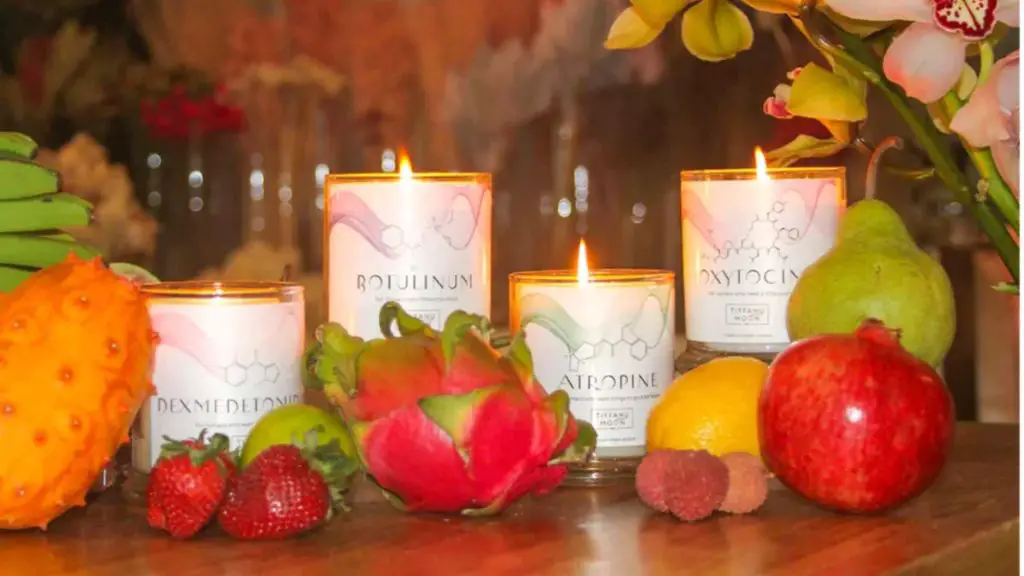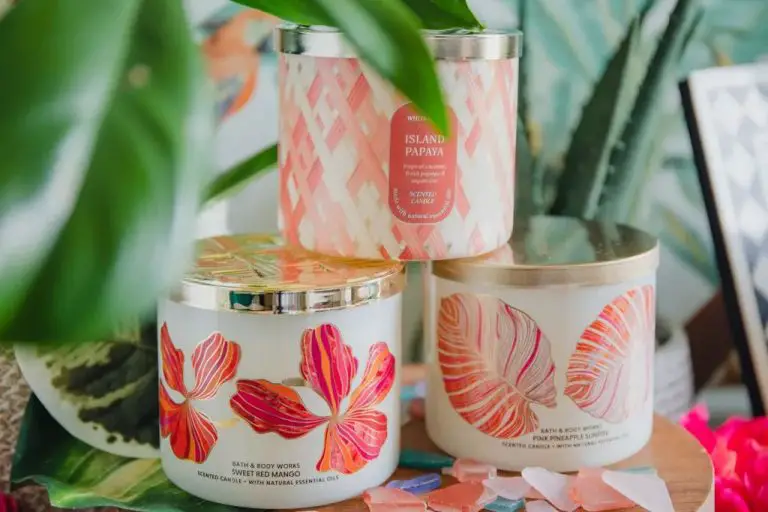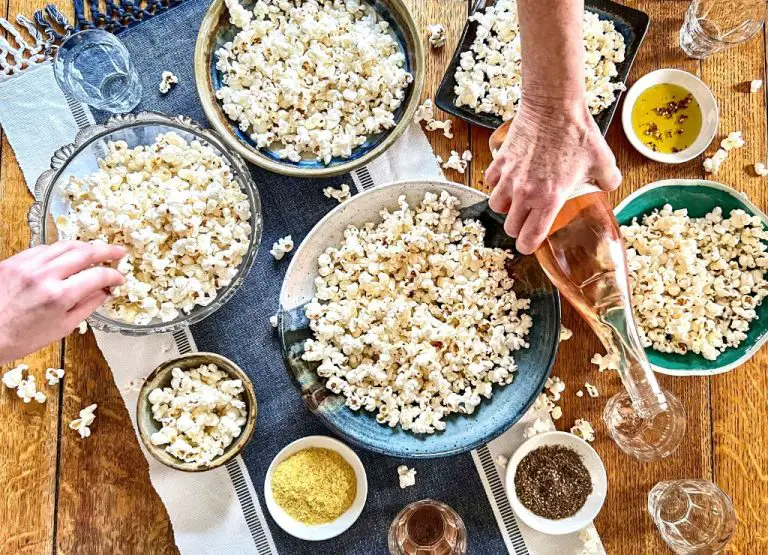Which Wax Smells The Best?
Introducing Candle Scents
Scented candles have become a hugely popular home décor and fragrance option around the world. According to Grand View Research, the global scented candle market size was valued at USD 3.7 billion in 2021 and is expected to expand at a compound annual growth rate (CAGR) of 5.8% from 2022 to 2030 [1]. The growth of the scented candle industry can be attributed to the utility and ambiance that candles provide. The scent from a lit candle helps set a desired mood or ambiance in a room or space. Scented candles are often used for relaxation, meditation, romance, and more. The variety of available scents also allows consumers to choose options that align with their personal preferences.
Candle scents come from essential oils, synthetic fragrances, or a blend of both. Most scented candle brands offer a wide selection of scent options ranging from fruity and floral to woody and spicy. Popular scent categories include fresh & clean, fruity, floral, food, spicy, woody, and herbal. With so many scent possibilities, scented candles have become a customizable way for consumers to fragrance their homes.
Most Popular Candle Scents
When it comes to candle scents, some rise above the rest in popularity. Here are some of the most popular candle fragrances and why people love them:
Lavender – With its relaxing and soothing aroma, lavender is one of the most beloved candle scents. It’s known for reducing stress and promoting calm (Our Favorite Scented Candles).
Vanilla – The warm, nostalgic scent of vanilla makes it a candle favorite. It’s a versatile fragrance that blends well with other smells like berries or spices (Most Popular Candle Scents).
Citrus scents like orange, grapefruit, and lemon are uplifting and energizing. Their bright, fresh aromas are instant mood boosters.
Floral scents like jasmine and rose speak to the popularity of flowers. These feminine fragrances are loved for their romantic and delicate notes.
Food inspired scents like pumpkin, sugar cookie, and apple pie appeal to our sense of nostalgia. Their mouthwatering aromas remind us of cozy memories.
In short, the most popular candle scents tap into our senses and emotions. Natural, familiar fragrances that evoke relaxation, energy, romance, or nostalgia will always be candle favorites for many.
Fruity & Citrus Scents
Fruity and citrus scents are among the most popular for candles. These uplifting and fresh scents evoke feelings of summer and tropical getaways. The top fruity scents include:

Lemon – clean, bright, and energizing. Reminiscent of lemonade and lemon meringue pie. Popular lemon scented candles include Yankee Candle’s Lemon Lavender and WoodWick’s Lemon Mint Leaf (https://www.pennandbeech.com/collections/fruity-scents).
Orange – sweet, tangy, and refreshing. Smells just like fresh squeezed orange juice. Top orange candles include Yankee Candle’s Orange Clove and Colonial Candle’s Orange Zest (https://colonialcandle.com/collections/fruit-fragrances).
Berry – sweet and juicy scents like strawberry, raspberry, blueberry, and blackberry. Often blended with vanilla. Bath & Body Works’ Raspberry Tangerine candle is a berry-citrus favorite (https://www.bathandbodyworks.com/c/home-fragrance/candles).
Tropical fruits like coconut, pineapple, mango, and papaya are also popular for their exotic, vacation-evoking scents. For example, WoodWick’s Pineapple Paradise candle.
No matter which fruity or citrus scent you prefer, these candles provide an energizing and cheerful aroma perfect for any room.
Floral Scents
Some of the most popular and beloved candle scents come from flowers. Floral scents like rose, lavender, jasmine, and gardenia evoke feelings of romance and tranquility. The sweet, delicate fragrance of flowers is known for its soothing and relaxing properties.
Rose is one of the most quintessential floral scents. It has a rich, sweet, and slightly spicy scent that is intensely floral. Roses smell romantic and elegant. Lavender is another top choice for floral candles. It has a fresh, herbaceous, calming fragrance that helps reduce anxiety and promote sleep. The clean and bright scent of jasmine is another floral favorite, while gardenia has a soft, creamy white floral aroma.
Other popular floral candle scents include lilac, iris, peony, magnolia, lily of the valley, and freesia. Blended floral scents, like English Garden, which mixes rose, jasmine, lily of the valley, carnation and hyacinth, are also beloved. No matter if you prefer single note floral scents or floral blends, they make soothing, romantic, and gorgeous candle fragrances.
Sources:
https://www.pennandbeech.com/collections/flower-scents
https://karlwinters.com/top-4-floral-scents-for-candles/
Food Scents
Food scents like pumpkin, cinnamon, and vanilla are popular candle fragrances. These warm, cozy scents remind us of baking treats and holiday meals. The sweet, appetizing aromas make us feel at home. Some of the most common food-inspired candle scents include:
Pumpkin – A true fall favorite, the scent of pumpkin evokes images of jack-o-lanterns, pumpkin pies, and autumn leaves. Candles like Pumpkin Spice from Penn and Beech capture the earthy cinnamon and nutmeg goodness of pumpkin baked goods.
Apple Pie – For a scent that’s warm, comforting, and nostalgic, apple pie candles can’t be beat. Scents like Capri Blue’s Cider Donut and Yankee Candle’s Spiced Apple evoke the cinnamon sugar goodness of apple desserts straight from the oven.
Vanilla – Sweet, rich vanilla is a versatile scent that goes well with almost anything. Vanilla-forward candles like Bath & Body Works Warm Vanilla Sugar provide a soothing, decadent fragrance perfect for winding down after a long day.
Sugar Cookie – Frosted holiday cookies fresh out of the oven – who wouldn’t want their home to smell like that? Sugar cookie candles like WoodWick’s Frosted Shortbread give off notes of sweet vanilla, butter, and sugar for cookie bliss.
Woody & Herbal Scents
Some of the most popular woody and herbal scents for candles include sandalwood, pine, sage, cedar, and eucalyptus. These earthy scents are often described as relaxing and meditative.
Sandalwood is a rich, woody scent that is both soothing and grounding. It is often used for meditation and relaxation. Sandalwood essential oil is derived from the heartwood of sandalwood trees and has an earthy, musky aroma. When used in candles, it creates a calming environment (Fontana).
Pine candles evoke the fresh, outdoorsy scent of pine forests. They provide an energizing yet comforting scent. Pine essential oil is distilled from pine needles and has a crisp, woodsy fragrance. Pine candles work well for calming anxiety or stress (PF Candle Co.).
Sage candles have an herbal, earthy aroma. The scent is associated with cleansing energies and purification rituals. Sage essential oil is derived from the leaves of the sage plant. It has a potent, herbaceous scent. When burned in a candle, it can help promote a sense of calm and clarity.
Other popular herbal scents for candles include eucalyptus, with its minty, medicinal fragrance, and cedar, with its warm, woody aroma. Overall, woody and herbal candles create an earthy ambiance perfect for relaxation.
How Candle Scents Are Made
The scents in candles come from essential oils and fragrance oils that are added to the melted wax. Essential oils are extracted directly from plants, fruits, and herbs. Some popular essential oils used in candles include lavender, lemon, eucalyptus, and tea tree oil. Fragrance oils are synthetic scents created to imitate natural essential oils or produce entirely new scents. Fragrance oils allow candle makers to create complex, unique scents not found in nature.
To create a layered, complex scent, candle makers typically blend multiple essential oils and fragrance oils together. For example, a “fresh linen” candle might contain essential oils like lemongrass, rosemary, and bergamot blended with clean musk or cotton fragrance oils. When blending scents, candle makers take into account how the different oils will interact with each other once heated. Some scents become stronger or change when burned, so testing is critical.
Candle makers also consider the strength of each oil when blending. Essential oils derived from delicate flower petals, roots, or citrus rinds tend to be weaker than those from hearty leaves, buds, berries, and resins. The concentration of oils will also vary. When combining strong, potent oils like clove or patchouli with lighter ones, they are used sparingly to prevent one scent from overpowering the others.
Finding the right scent balance is an art and science. Most candle makers will go through multiple blending and burning tests before deciding on the perfect robust, yet well-rounded aroma for their candle. With the right combination of essential and fragrance oils, the possibilities for crafting distinctive, quality candle scents are endless.
Sources:
https://www.bhg.com/decorating/do-it-yourself/how-to-make-candles/
https://www.apartmenttherapy.com/how-to-make-homemade-scented-candles-242832
Health Considerations
While scented candles can create an inviting ambiance, there are some health considerations to be aware of when burning them. Some people may experience allergic reactions or sensitivities to ingredients in candles, especially synthetic fragrances.[1] Common symptoms include headache, dizziness, nausea, and irritation of the eyes, skin, nose and throat.[2]
Proper ventilation is crucial when burning candles to allow wax vapors and particulates to dissipate. Letting candles burn for too long or in small, enclosed spaces increases concentration of emissions. It’s recommended to keep burning times under 4 hours, and open doors/windows to bring in fresh air.[3]
Those with asthma or existing respiratory conditions should exercise particular caution with scented candles, as lung irritation can occur. Pregnant women may also want to avoid overexposure. In general, burning candles in moderation with adequate ventilation can help minimize risks.
Sources:
[1] https://www.nytimes.com/2021/11/09/well/scented-candles-health.html
[2] https://www.today.com/health/burning-candles-bad-for-you-rcna80223
[3] https://www.ncbi.nlm.nih.gov/pmc/articles/PMC9832800/
Testing Candle Scents
Testing different candle scents is a key part of determining which fragrances smell the best. There are a few main steps to testing candle scents effectively:
First, gather a selection of fragrance oils you want to test. It’s recommended to start with 2-4 options. Measure out equal amounts of each fragrance into separate containers.
Next, follow your standard candle making process using an unscented base wax. Make sure to use the same wax type, wick type, vessel, etc. for each test candle so variables are limited. This allows you to evaluate how each fragrance performs on its own. According to Scent Guide for Candle Making, adding the fragrance mixture to hot wax is an easy way to prepare test candles.
Once the candles are prepared, let them cure fully before evaluating. When testing, record details like scent strength, appeal, burn quality, etc. Consider having multiple testers provide input. Rate each candle on a 1-5 scale to quantify results.
Based on test results, you can determine your top scent picks. Fragrances that rate highly across various criteria are good candidates for full production. With effective testing, you can identify which wax smells the best before committing to large batches.
Conclusion
When it comes to selecting the best smelling candle scent, it comes down to personal preference. However, based on testing the most popular candle fragrances, a few key winners emerge.
The fruity scents, especially strawberry, mango, and peach, were crowd-pleasers. These sweet, juicy scents evoke summer and freshly-picked fruit. They provide an instant pick-me-up and breath of fresh air.
Vanilla and sugar cookie scents also ranked highly in our testing. These warm, comforting bakery scents remind people of home cooking and family memories. The nostalgia factor makes them a top choice for relaxation.
Finally, clean and refreshing scents like eucalyptus, lavender, and lemongrass earned top marks. These scents are invigorating and perfect for kitchens, bathrooms, and meditation spaces.
While scent preferences vary by individual, fruity, bakery, and herbal fragrances tend to have the most universal appeal. Consider one of these crowd-pleasing scents next time you shop for candles.




